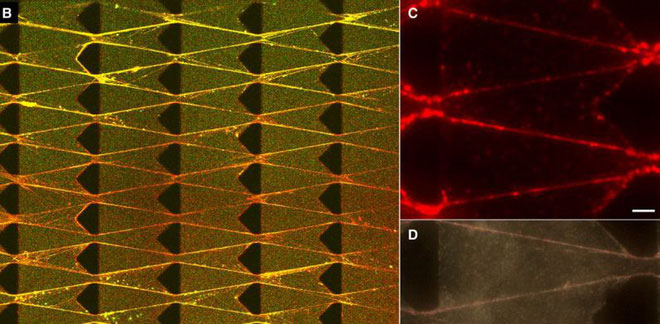Scientists create living machines: Eat, know big and know how to evolve
New touch technology, machine learning algorithms are bringing the entire robot industry into its own 'Renaissance era'. Each generation of new robots is more modern and complex than its predecessors, operating software is becoming more and more versatile and advanced.
But the evolutionary steps of robots are still led by humans. So what if the robot evolved itself?
Researchers from Cornell University have created a machine based on the characteristics of DNA, with the ability to 'live' like a real creature . These machines can mobilize, absorb resources to grow and eventually decay, they can even evolve over time. Then like all other living things (or most other living things), they will also die.
The material for making these systems is called DASH , an abbreviation for DNA Order and Synthesis - DNA-based Assembly and Syntheis of Hierarchical Order .

This system is called DASH.
It sounds like a machine that can 'live' , but one of its fathers, biology professor Dan Luo from the University of Agriculture and Life Sciences said:
'We introduced a completely new concept of living matter , including an internal metabolic system. We do not create life, but create a material that has the ability to 'live' never seen before. '
The Cornell team of scientists said this material has a biological complexity comparable to mold:
' In this study, we created a dynamic biological material that operates based on artificial metabolism, demonstrating the integration between biosynthesis and the synthesis and decomposition process. The movements of matter are similar to molded systems based on mechanical systems '.
And it seems that 'creating life' is not enough, researchers also let them compete with each other:
' By expanding the program, we see the competition between the two movement systems. Applications of the system, including the detection of pathogens and the production of hybrid nanoparticles, show the future uses of the system we create. Dynamic biomaterials that are operated by artificial metabolic mechanisms can open up an unprecedented path, leading to the emergence of artificial biological systems with resilience and self-sustenance .

The process of creating materials and applying DASH into manufacturing systems.
Basically, the team at Cornell University creates robots with biological materials based on DNA prototypes, observing how they transform existing resources into energy, observing the process of growing up, dying and making show them together.
This is just the first test phase. The guide led the study, Shogo Hamada said: 'In the end, this system can give us self-generating machines that have the same characteristics as living things.'
With this momentum, we will soon have to sit back to discuss the artificial life, wondering if it is classified as 'life' .
- Eye-catching with the super-fast metal shaping capabilities of advanced CNC machines
- Creatures do not evolve for two billion years
- Supercomputer made up of 8 PS3 machines
- 14 odd vending machines can only be Japan
- Inventing tissue-like materials living with 3D printers
- Communicating with machines: Stories are no longer far away
- Video: How does an ATM work?
- At some point, machines will control humanity
- Robots know to 'give birth' and evolve themselves
- Jet propulsion system based on the shape of mollusks
- Automatic pizza vending machine in Japan - No need to worry about a closed shop, just buy it!
- The human brain continues to evolve
 The US company is about to build a supersonic passenger plane of 6,000km / h
The US company is about to build a supersonic passenger plane of 6,000km / h Japan develops avatar robot as in fiction film
Japan develops avatar robot as in fiction film Australia tested the world's first mango picking robot
Australia tested the world's first mango picking robot America develops technology to separate water from animal waste
America develops technology to separate water from animal waste